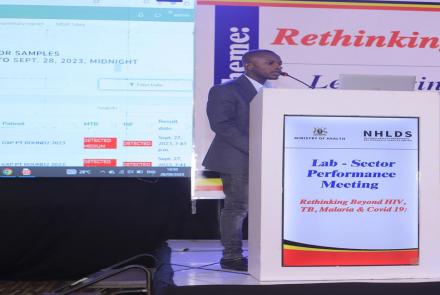Uganda scaled-up Early HIV Infant Diagnosis (EID) when simplified methods for testing of infants using dried blood spots (DBS) were adopted in 2006 and sample transport and management was therefore made feasible in rural settings.
Before this time only 35% of the facilities that were providing EID services were reached through the national postal courier system, Posta Uganda. The transportation of samples during this scale-up, therefore, quickly became a challenge and varied from facility to facility as different methods were used to transport the samples. This study evaluates a novel specimen transport network system for EID testing.
Methods:
A retrospective study was done in mid-2012 on 19 pilot hubs serving 616 health facilities in Uganda. The effect on sample-result turnaround time (TAT) and the cost of DBS sample transport on 876 sample-results was analyzed.
Results:
The HUB network system provided increased access to EID services ranging from 36% to 51%, drastically reduced transportation costs by 62%, reduced turn-around times by 46.9% and by a further 46.2% through introduction of SMS printers.
Conclusions:
The HUB model provides a functional, reliable and efficient national referral network against which other health system strengthening initiatives can be built to increase access to critical diagnostic and treatment monitoring services, improve the quality of laboratory and diagnostic services, with reduced turn-around times and improved quality of prevention and treatment programs thereby reducing long-term costs.






